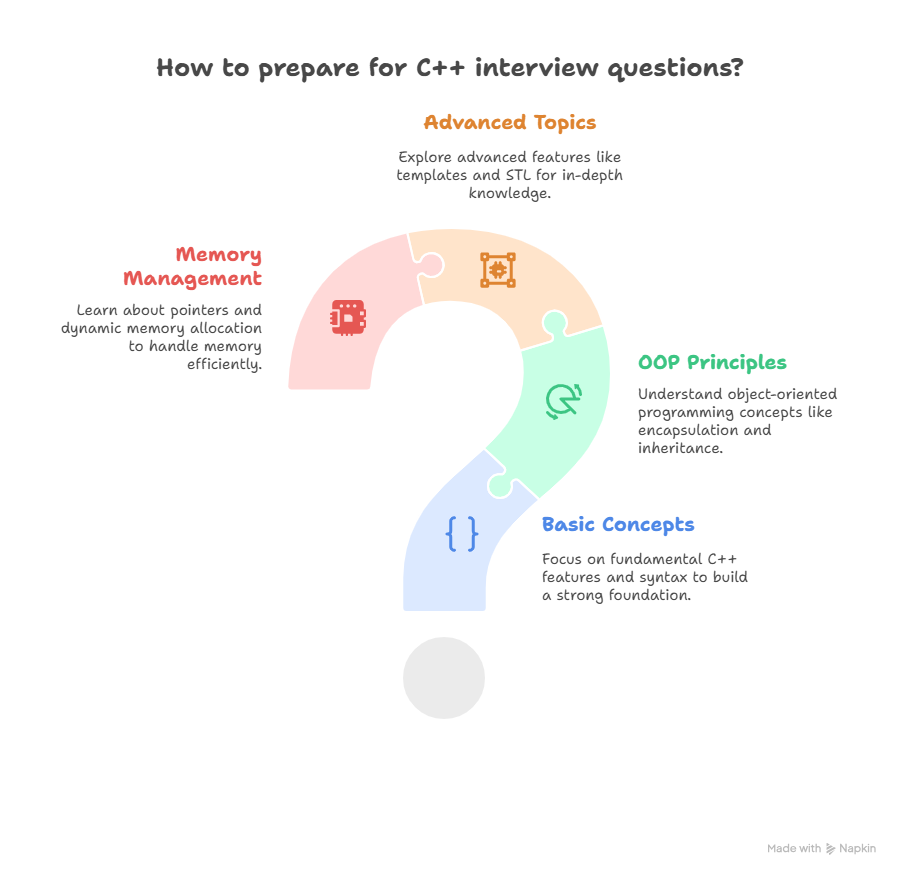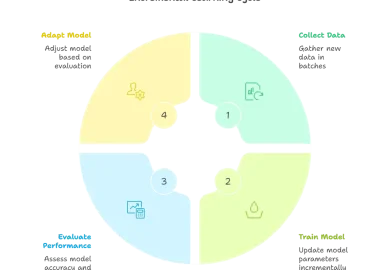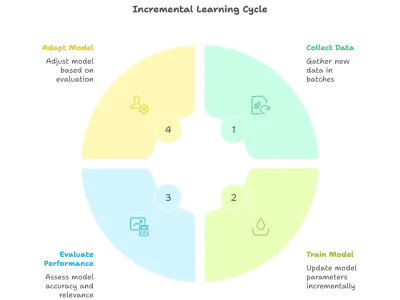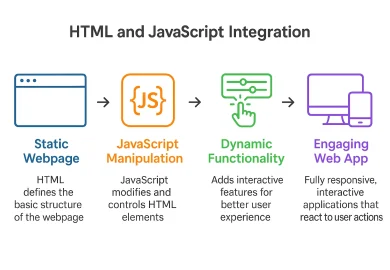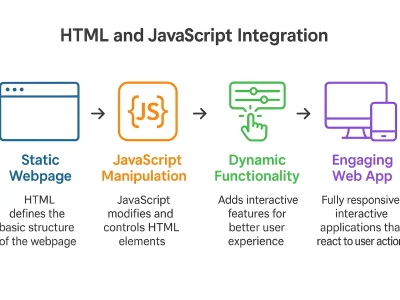In the adaptive domain of software engineering, C++ emerges as the foundational language for performance-oriented applications, including state-of-the-art game engines, real-time fintech applications, and complex, deep-seated solutions. C++ is a powerful, general-purpose programming language that excels at synergizing high-level abstraction with low-level control, making it a preeminent choice for global industry leaders such as Google, Amazon, and Microsoft. As the technological ecosystem advances, C++ remains the anchor, enabling developers to design efficient, contemporary systems that drive the modern tech world.
Strategically preparing for C++ interview questions is a crucial objective for developers seeking to secure sought-after roles in the ever-evolving tech ecosystem. Furthermore, it is essential to note that the aim of these interviews is not just to examine your syntax but also to comprehend your ability to effectively implement the respective concepts, such as template meta programming, concurrency, and memory management, to resolve complex issues under pressure. The adeptness in C++ interview questions reflects the candidate’s competency in providing an efficient and scalable code set. This skill set determines top-tier talent in the eyes of perceptive employers.
The demand for C++ developers continues to evolve across various sectors, including gaming, automotive, telecommunications, and high-performance computing. India’s job market reflects a steady trend in demand for C++ developers, with C++ experts demanding median salaries i.e., approximately an annual package of INR 6 lakhs, while senior roles often go beyond INR 10 lakhs for exclusive skills. This redefines C++’s critical role in processes wherein speed and reliability are predominant.
This comprehensive guide is all-inclusive and empowers C++ developers to excel in C++ interview questions. It includes the basic principles of the C++ programming language, advanced concepts such as smart pointers and multithreading, common C++ interview questions and answers, best coding practices, and strategies for optimizing performance. Through Tutedude’s expert mentorship and inclusive courses on C++, developers can expedite their career growth, sail through potential hurdles, and strategically pursue their C++ career.
Why C++ Interview Questions Matter in 2025?
The C++ programming language drives innovation in the software development arena, empowering sophisticated game engines, high-frequency fintech platforms, and more. Its advanced control over system performance makes it a pivotal tool in the gaming industry, embedded systems (such as those used by Siemens), and the finance industry (notably HDFC Bank), making a C++ skillset a game-changer in a developer’s career.
Majorly, MNCs and eminent companies provide C++ developers an edge over others, as they are exceptionally skilled in object-centric design, memory efficiency, and collaborative programming, along with strategic and analytical thinking. Excelling in C++ interviews reflects highly on the developer’s ability to develop efficient and reliable software, a significant advantage in the modern technological ecosystem.
Interview preparation for C++ job roles is crucial, as employers tend to assess candidates’ ability and proficiency in solving complex coding problems that require practical solutions. The volubility of basic and advanced concepts, namely thread safety, Standard Template Library (STL), and polymorphism, provides candidates an edge over others, while demonstrating their aptitude for demanding roles.
India’s C++ job market is burgeoning, with platforms such as Naukri.com disclosing over 14,000 job openings in the gaming, IT, and telecommunications industries, while Talent.com forecasts an average annual growth rate of 9% by 2028. Strategic proficiency in acing C++ interview questions paves the way for contemporary, high-impact roles. Through our expert guidance, candidates can refine their technical expertise, overcome interview challenges, and secure high-impact positions with confidence.
Basic C++ Interview Questions and Answers (Questions 1-15)
Prepare for your next tech interview with these top 15 basic C++ interview questions and answers
1.What is C++, and what are its key features?
C++ is a compelling programming language, empowering applications in the gaming industry and IoT systems. Its key characteristics include: object-oriented paradigm, ascension, standard libraries, and lateral processing. For instance, to procure and organize inventory data, one may use the following class definition: class Product { public: string code; }.
2.What is the difference between C and C++?
The programming language C typically relies on procedural programming, whereas C++ supports object-oriented designs with classes. Moreover, C++ offers strategic function overloading and error handling, unlike C. For instance,the code: string text = “Hello”; in C++ explicates string operations in contrast to C’s char arrays.
3.What are the different data types in C++?
Typically, data types in C++ are classified into 3 categories, namely Basic Data Types (Built-in data types that are used to store simple values, such as int, float, char, bool, void, etc.), Derived Data Types (Derived from basic data types, such as array, pointer, reference, function, etc.), and User Defined Data Types (Custom data types designed by the developer basis the requirements such as class, struct, typedef, etc.).
4.What is the difference between a struct and a class in C++?
Struct and class both belong to the category of custom data types. However, both data types vary basis hiding implementation details, i.e., a structure, by default, does not hide its details from whoever uses the code, i.e., Public; while a class, by default, hides all details from the user of the code, i.e, Private. Private. Furthermore, structure is generally used for data grouping, while class is used for data extraction and inheritance.
5.What are access specifiers in C++?
Generally, access specifiers regulate the accessibility of members, i.e., attributes and methods of a class. Access specifiers help safeguard data and classify code to derive or modify only the respective qualities. The three access specifiers in C++ include: a) Public: Members can be accessed externally; b) Private: Members can be viewed only internally; c) Protected: Members can be accessed in inheritance classes. For instance, class Student {private: int marks; public: string name;} restricts the access to the marks of class Student.
6.What are a constructor and a destructor?
A constructor is a member function that helps configure an object of a class and has the same name as the class itself. Mostly, it is used to allocate memory to an object of the class. A destructor is a member function that generally deconfigures the memory of an object and begins with a tilde (~). For instance, the code: class Laptop {public: Laptop() {storage=512; } ~Laptop () {} }; configures and clears data on a laptop.
7.What is function overloading?
Function overloading in C++ allows developers to define multiple functions with the same name but with different parameter lists. It is a kind of compile-time polymorphism, wherein a function can take on different roles based on the parameters assigned to it. It helps in enhancing the readability of the program. For instance:
To add two numbers:
int add (int a, int b) {
return a + b
Same function with distinct arguments
To add three numbers:
Int add (int a, int b, int c)
return a + b+ c;
}
8.What is the difference between call by value and call by reference?
Call by value refers to when we call a function and pass the values of variables to it, whereas, by calling a function, we pass down the address of the variables instead of the values. Furthermore, in call by value, the changes made to the dummy variables in the called function do not affect the value of the actual variables in the calling function. While in call by reference, due to access to the addresses and the corresponding access to the actual variables, it offers the right to modify the actual variables.
9.What are inline functions?
Inline functions provide a means to enhance program performance by minimizing the overhead of function calls. When a function specifically mentions ‘inline’, it alters the code at call sites, thereby optimizing performance. For instance, the syntax is: inline return_type function_name (params)……… Typically, inlining a function is merely a request to the compiler, not a command.
10.What is the scope resolution operator?
A scope resolution operator in C++ i.e., (::) is generally used as a means to access the identifiers i.e., names and function names, defined inside some other scope in the current scope. Syntax: scope_name :: identifier; wherein scope_name refers to the scope wherein the identifier is defined.
11.What are header files, and why are they used?
Header files in C++ are generally used to define the interface of any module or library. All the header files in C++ may or may not end with the “.h” extension, whereas all header files in C must end with the “.h” extension. Typically, a header file includes: function definitions, data type definitions, and macros.
Syntax: #include <filename.h> // for files already existing in the system #include “filename.h” // for files in the same directory as the source file. Wherein, “#include” is important to direct the compiler that the header file is to be processed before compilation.
12.What is the difference between #include <> and #include “”?
The difference between the preprocessor lies in the location where the file is to be searched in the code. For instance, #include <> is used for pre-defined header files, while #include “ “ is used for header files that the programmer may define.
13.What are preprocessor directives?
In C++, preprocessor directives are a unique set of commands that are used to direct the preprocessor. Generally, they begin with # and instruct the preprocessor to alter the source code before compilation. C++ offers different preprocessor directives for other operations; namely: a) #include- links a header file in the source code; b) #define- to create a symbolic or macro constant; #error- pauses the compilation process and displays an error notice; amongst others.
14.What is the main() function in C++?
Main() function typically marks the entry point in a C++ program, i.e., the system access to the C++ code is provided through the primary () function. The main function directs program execution by guiding calls to other functions within the program. Several specifications apply to the main function, unlike any other functions, including: The main function can’t be: a) declared static; b) declared inline; c) called from your program; and d) have its address taken.
15.What is the difference between int main() and void main()?
In C++, there is no specific difference between int main () and void main (). However, it is observed that int main (void) technically functions better as it is clear, well defined, and mentions that the main can be called without any parameters.
Object-Oriented Programming Questions
Master the core principles of OOP in C++—including encapsulation, inheritance, polymorphism, and abstraction—through these commonly asked interview questions.
16.What are the four pillars of Object-Oriented Programming?
Object-Oriented Programming, or OOP, as its name suggests, focuses on the use of objects, encapsulation, and reusability in programming. OOP functions on four essential pillars, namely: Abstraction (explicates objects by concentrating on essential details while concealing complex information), Inheritance (allows new classes to derive attributes from existing ones), Encapsulation (Bundles data and methods together), and Polymorphism (allows diverse objects to be treated systematically).
17.What is encapsulation, and how is it achieved in C++?
Encapsulation, one of the 4 pillars of OOP, refers to the bundling of data and methods together in a single unit. In C++ OOP, encapsulation is achieved using classes and access specifiers that ensure data and processes are enclosed within a single unit. The primary advantage of encapsulation is that only the appropriate elements are visible to the user, and other irrelevant information is concealed.
18.What is inheritance, and what are its types?
As the term denotes, inheritance in C++ refers to the process by which a new class derives properties and components from an existing one. The mode of inheritance regulates the access level of the inherited members of the existing class in the derived class. Typically, in C++, there are three modes of inheritance: Public Inheritance Mode, Protected Inheritance Mode, and Private Inheritance Mode.
19.What is polymorphism? Explain with examples.
In layman’s terms, polymorphism refers to having multiple forms. For instance, who has multiple forms at the same time? In C++, polymorphism is used with respect to functions and operators, i.e., a single function or operator can work differently in different contexts. Generally, polymorphism can be divided into two types, i.e., Compile-Time Polymorphism and Run-Time Polymorphism. For instance, we have the function makeSound (); when we call this function for a cat, we will hear the meow sound, while when we call this function for a cow, it produces the moo sound.
20.What is abstraction in C++?
Data Abstraction is one of the most critical features of object-oriented programming in C++. Abstraction refers to the display of essential information only, while ignoring the irrelevant information. The two types of abstraction in C++ include: Data Abstraction and Control Abstraction. Abstraction in C++ can be done using classes, access specifiers, and in header files.
21.What is the difference between public, private, and protected inheritance?
Typically, inheritance includes 3 different modes, namely Public Inheritance Mode, Protected Inheritance Mode, and Private Inheritance Mode. In Public Mode, the public members of the base class become public in the derived class, and similarly, the protected members of the base class become protected in the derived class. In Protected Mode, both the public and protected members of the base class become protected in the derived class. Lastly, in Private Mode, both the public and protected members of the base class become private in the derived class. Private Mode is the default mode of inheritance that is applicable when no other mode is specified.
22.What are virtual functions, and why are they used?
A Virtual Function or Method is a member function in C++ that is usually declared within the base class and is redefined, i.e., overridden by the derived class. Generally, when you refer to a derived class object using a pointer or reference to the base class, you can call a virtual function for that particular object and execute the derived class’s version of the method. These functions ensure that the correct function is called for an object, irrespective of the type of pointer used for the function call. Generally, virtual functions are used for runtime polymorphism.
23.What is a pure virtual function?
A pure virtual function or abstract function in C++ is a virtual function for which no implementation exists but can only be declared. It is usually declared by assigning 0 in the declaration. Any base class that consists of a pure virtual function becomes abstract, and no definition is provided in a base class. Syntax: virtual <func_type> <func_name> ()= 0
24.What is the difference between function overloading and function overriding?
Function Overloading in C++ allows multiple definitions of a function by modifying the signature, i.e., by changing the number of parameters and the data types of parameters. It can usually be done in both base and derived classes. Whereas, Function Overriding refers to the modification of a base class function in its derived class using the same signature i.e. the same parameters and datatype. However, unlike function overloading, this can only be done in derived classes.
25.What are abstract classes in C++?
In C++, abstract classes serve as expressions of general concepts from which specific classes can be derived. One cannot create an object of an abstract class type; however, pointers and references to abstract class types can be used. If you want to create an abstract class, you have to declare at least one pure virtual member function. It is essential for abstract classes to implement the pure virtual function; otherwise, they will be considered abstract classes as well.
Advanced C++ Concepts
Dive into high-level C++ topics like templates, smart pointers, STL, RAII, and lambda expressions—key areas often tested in technical interviews.
26.What are templates in C++?
In C++, templates form the foundation for generic programming. As a high-level language, C++ requires all variables to be of a specific type, either declared by the programmer or deduced by the compiler. Templates enable users to define the operations of a class or function and let users decide on the grounds on which those operations should operate. How can a function template be defined?
template <typename T> T minimum(const T& lhs, const T& rhs) { return lhs < rhs ? lhs : rhs; }
This is a code for a template for a generic function with a single parameter, i.e., T, and return value, and call parameters include (lhs and rhs) of the same type.
27.What is the Standard Template Library (STL)?
A Standard Template Library (STL) in C++ is a bundle of template classes and functions that offer the execution of common data structures and algorithms, namely lists, stacks, arrays, etc. The 4 components of STL include: a) Containers, b) Algorithms, c) Iterators, and d) functors.
28.What are iterators in C++?
Iterators in C++ refer to an object like a pointer, that points to an element inside the container. It is usually used to sail through the contents of the container. Syntax: cType:: iterator iteratorName;
Wherein: cType refers to the Container Type.
29.What is the difference between a vector and an array?
Arrays and Vectors are both used to store bundles of data in C++. Array refers to a collection of a specific number of elements of a particular type i.e. a general fixed-size series of elements. Whereas, Vector is a part of C++ STL and includes variable sizing and offers more resilience. The strategic choice between array and vector depends on the size of the collection, consideration of performance, and flexibility.
30.What are smart pointers in C++?
In contemporary C++ programming, STL includes smart pointers, which help users ensure that the programs are free of memory and resource leaks. Usually, smart pointers are defined in the std namespace in the <memory> header file and form an important component of RAII (Resource Acquisition Is Initialization).
31.What is RAII (Resource Acquisition Is Initialization)?
RAII is a programming method in C++ that refers to the association of resource management with the lifetime of an object,i.e., creation and destruction.
32.What are lambda expressions in C++?
Lambda Expressions were introduced in C++ by C++ 11, which allows inline functions and defines an anonymous function object where it is introduced or passed as an argument to a function. Typically, lambda is used in STL algorithms as a callback function.
33.What is the difference between shallow copy and deep copy?
Generally, the creation of an object refers to making a replica of an object bearing the same value, data type, and resources. Basis the resources held by the object, one can either perform a shallow copy or a deep copy to create a replica of the object. In Shallow Copy, an object is created by simply copying the data of all variables in the primary object, whereas in Deep Copy, an object is created by copying the data of all variables and similar memory resources with the same value as the object.
34.What are friend functions and friend classes?
Friend functions and classes are those concepts in C++ that facilitate certain functions or classes to access the private and protected members of another class. For instance, a friend class can access the private and protected members of other classes, wherein it has been declared a friend. At the same time, a friend function can be offered access privilege to private and protected members of another class without being a member function of that class.
35.What is multiple inheritance, and its problems?
In C++, multiple inheritance is a feature wherein a class can inherit from multiple classes. The general problems associated with multiple inheritance include high-level coding complexities, maintenance challenges, method resolution conflicts, and diamond obliqueness.
Memory Management and Pointers
Understand how C++ handles memory through pointers, references, dynamic allocation, and best practices to avoid leaks, dangling pointers, and inefficiencies.
36.What are pointers, and how do they work?
Pointers in C++ refer to a variable that stores the memory addresses of another variable, facilitating direct access to data. Generally, a pointer can be declared similarly to any other variable with an asterisk (). For instance, to create a pointer to store the address of an integer data, one can use: int* ptr;
37.What is the difference between pointers and references?
Unlike other programming languages, C++ supports both pointers and references. Superficially, both pointers and references are similar as both allow one variable access to the other variables. However, the primary difference between the two is: A pointer is a variable that includes the memory address of another variable, whereas A reference is an alternate name for an existing variable.
38.What are dangling pointers, and howcan to avoid them?
Generally, several challenges arise if pointers are not handled carefully while programming in C++. Dangling Pointers, as the name denotes, refers to the deconfiguration of an existing pointer that directs to the location of memory. This deviation can be avoided by understanding the primary causes of dangling pointers and by: a) assigning NULL or nullptr to an unused pointer; b) using smart pointers; c) using dynamic memory allocation for local variables that need to be returned; and d) using references instead of pointers.
39.What is dynamic memory allocation in C++?
In C++, dynamic memory allocation refers to the procedure of allocating memory space during execution or run time.
40.What is the difference between new/delete and malloc/free?
In C++, new and delete operators, along with malloc () and free () are typically used to dynamically allocate memory in the heap. However, the “new” operator is specific to C++ only, and it calls the constructor of a class, while “malloc()” does not.
STL and Data Structures Questions
Explore key C++ data structures and Standard Template Library (STL) components—like vectors, maps, lists, and algorithms—crucial for coding interviews.
41. What are the main components of STL?
The 4 primary components of STL include: a) Containers (Data structures that store objects and data basis the requirements), b) Algorithms (Wide range of functions to perform common operation on data), c) Iterators (Used to point to the memory addresses of STL containers), and d) functors (Objects generally treated as a function and used along with STL algorithms).
42. What is the difference between vector, list, and deque?
In STL, double-ended queues, i.e., deque, refer to those sequence containers that facilitate expansion and contraction on both ends. Further, vectors refer to variable arrays with the inherent nature of automated resizing whenever an element is inserted or deleted. Furthermore, a list in C++ refers to a container which is doubly linked, i.e,. Each element of the list includes the address of the predecessor and the subsequent element. Syntax for list: list <T> l;
43. What are associative containers in STL?
In STL, associative containers refer to a group of class templates that are used to execute associative arrays. These containers are used to store elements; however, there are some restrictions placed on the elements, such as elements shall stringently follow the weak ordering sequence.
44. What is the difference between a map and an unordered_map?
Map and unordered map in C++ refer to those containers that store data in the format of key-value pairs, but the terms differ exponentially with respect to execution and characteristics. Akin to its name, a map stores key-value pairs in an orderly manner, unlike an unordered map, which stores key-value pairs in an unordered manner. A map is generally implemented using the red-black tree, while an unordered_map is implemented using the hash table.
45. What are algorithms in STL?
C++ STL includes a diverse collection of algorithms designed to be implemented on STL containers. These are generally defined under <algorithm> and <numeric> header files. The types of algorithms in STL include: Mutating and Non-Mutating Algorithms.
46. How do you implement a custom comparator?
In C++, a custom comparator is a functor/lambda, i.e., a function that specifies how two elements shall be compared during sorting in containers. It is usually implemented using Functors, a Function Pointer, or a Lambda Expression.
Exception Handling and Advanced Topics
Learn how C++ manages runtime errors with try-catch blocks, custom exceptions, and explore modern features from C++11 to C++20 that boost code efficiency.
47. What is exception handling in C++?
Exceptions in C++ refer to unforeseen challenges or errors that may occur during C++ programming. For instance, if in a program that divides numbers, division by 0 is requested, it may lead to exceptions or errors. Programmers typically forecast exceptions and accordingly make the program exception-free by using: a) Try-Catch Block; b) Throwing Exceptions; c) Catching Exceptions; or d) Exception Transmission.
48. What are the keywords used in exception handling?
As aforementioned, the typical keywords used in exception handling include: a) Try; b) Throw; c) Throws; and/or d) Catch.
49. What is the difference between throw and throws?
Throw and Throws refer to some of the keywords in exception handling, wherein the throw keyword is used inside a function and is used to logically throw an exception. Whereas, the throws keyword is used in the signature of a function when the function seems to include statements that may lead to exceptions.
50. What are custom exceptions?
Custom exceptions in C++ refer to user-defined exception/s that can be created by any person to tackle specific application requirements and can be thrown by using the “throw” keyword. There are two types of custom exceptions, namely Checked Exceptions and Unchecked Exceptions.
51. What are some C++11/14/17/20 features?
The technical highlight of C++ 11/14/17/20 include:
| Sr. No. | Version | Features |
|
|
C++ 11 |
|
|
|
C++ 14 |
|
|
|
C++ 17 |
|
|
|
C++ 20 |
|
C++ Interview Questions by Experience Level
Preparation for C++ interview questions in 2025 requires perseverance, mentorship, strategy, and a well-defined approach, as offered by our mentors at Tutedude. Our guide covers questions for all levels of experience, including:
Entry-Level (0-2 years)
Generally, interviewers assess the primary understanding of the concepts for entry-level professionals. The key concepts for assessment may include: basic syntax, variables, functions, and OOP basics, as covered under questions 1-20 hereinabove. The candidate should bind his/her focus and gain clarity on concepts such as inheritance, encapsulation, etc,. with relevant examples. Please ensure you adhere to a strict timeline of 2-3 weeks for preparation to overcome common mistakes, such as unexecuted variables or increased exceptions while programming. On the other hand, while gaining a thorough understanding of the theoretical concepts, strengthen your practical insights by solving C++ coding problems.
Mid-Level (2-5 years)
Interviewers typically expect mid-level professionals to have a strong understanding of advanced concepts of OOP, STL, memory management, STL algorithms, and containers, as included in questions 21-40 hereinabove. Please ensure you strengthen your practical application of concepts i.e. prior project experience, debugging, and code optimization strategies. It is imperative to dedicate 3-4 weeks to preparation and revision, while specifically allocating your time to real-time problem-solving of complex data structures and practical scenarios.
Senior-Level (5+ years)
In case of C++ senior roles, employers generally designate the interviews to project design and architecture, and structures, as postulated under questions 41-51. You can expect questions on project scalability, team management, and timely delivery of projects, including prior practical experience. It is advisable to strengthen your preparation over 4-6 weeks.
Common C++ Interview Coding Problems
Typically, C++ coding interviews include complex algorithmic challenges i.e. practical-oriented problems to assess the candidates’ real-time problem-solving skills, logical and analytical thinking, and coding efficiency. Mastering these strategies provides candidates with an edge over others and amplifies their chances of securing the desired role. Typical problems include:
Array and String Issues
Generally, candidates are required to reverse arrays or strings, solve two-sum problems, and are mostly assessed on indexing and hashing tricks.
Linked List Issues
Candidates are expected to reverse linked lists, detect patterns using Floyd’s cycle detection algorithm, and/or merge two sorted linked lists.
Tree and Graph Issues
Candidates are generally assessed on crucial topics, namely binary search, binary tree traversals (i.e. inorder, preorder, postorder), and mostly primary graph algorithms such as BFS and DFS.
Dynamic Programming
Typical problems in modern world programming include the 0/1 knapsack problem, the fibonacci sequence, and the longest common subsequence, amongst others.
Tips for Acing C++ Technical Interviews
At the outset, begin understanding the core concepts and terminology of the C++ language. Furthermore, leverage your practical experience and refine your strategies by solving coding problems daily and preparing for potential interview questions. Ensure you maintain a confident approach while answering and solving the questions put forth by the interviewer, and address the problems proactively. Practice a confident, technical communication approach and admit in cases of ambiguity. Adhere to the preparation timelines to overcome any potential challenges during the interview. Maintain a well-defined and clear approach to foster trust and depict your C++ expertise to interviewers.
Conclusion and Next Steps
Acing a C++ interview requires dedication and a firm hold of the core concepts and their proactive application in real-time cases. Consistently focus on refining your technical personality, coding style, and communication skills. Thoroughly review this guide and stay motivated both before and after the interview, as they are learning milestones. For consistent upskilling, regularly practice real-time problems and check out our expert-driven C++ course and resources at Tutedude.

